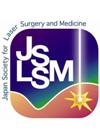All issues

Volume 21, Issue 3
Displaying 1-4 of 4 articles from this issue
- |<
- <
- 1
- >
- >|
-
Masaharu ISHIZUKA2000Volume 21Issue 3 Pages 185-200
Published: 2000
Released on J-STAGE: September 24, 2012
JOURNAL FREE ACCESSRecently it is possible to measure the response of cerebral autoregulation at intervals of only seconds with near-infrared spectroscopy (NIRS), This study evaluated the change of hemoglobin concentration, blood pressure and heart rate during supine rest and the 80-degree head-up position with NIRS. For data comparison, this study group was divided into 4 groups: 11 patients with Acute Myocardial Infarction (AMI), 6 patients with Cerebral Infarction (CI), 7 patients with Spinocerebellar Degeneration (SCD) and 10 healthy controls. In the experiments, the changes of oxyhemoglobin concentration in the patients with AMI had similar patterns of change of that in controls during converting position, but there was a little change of blood pressure and heart rate which were the indicators of systemic circulation, which may be induced by medicine. In contrast, the change of heart rate in the patients with CI and SCD had similar patterns of change of that in controls, but the change of oxyhemoglobin concentration had not changed significantly during converting position. In conclusion, our results suggest that it is useful for monitoring the change of hemoglobin concentration in brain during converting position for detection of abnormality in cerebral circulation with NIRS.View full abstractDownload PDF (7088K) -
Junnosuke ISHII, Kunio FUJITA, Masumi FUJIMORI, Ming-yu CHEN, Joji IIZ ...2000Volume 21Issue 3 Pages 201-207
Published: 2000
Released on J-STAGE: September 24, 2012
JOURNAL FREE ACCESSMore than four hundred cases of oral and maxillofacial lesions have been treated with CO2 laser and Nd: YAG laser in our department since 1979. However, we have found the effectiveness of the two types of laser to differ for treatment of the same disease, because of their differences of the wave length of the laser beam.
The clinical assessment for 40 cases of oral and maxillofacial lesions treated with KTP laser between Sept. 1995 and Nov. 1999 was performed.
These included 16 malignant tumors (14 squamous cell carcinoma, one basal cell carcinoma and one metastatic renal cell carcinoma to the tongue), 14 leukoplakia, five benign tumors (three fibroma, one hemangioma and one papilloma), two hyperplasia of the gingiva and others.
Three cases were treated using the method of vaporization (15W), one case of hemangioma using coagulation (1.5W), and the rest using incision (10W).
It was found that KTP laser was able to be applied satisfactorily to any part of the mouth, and that bleeding from the oral mucosa was sufficiently controlled during the operation. Therefore, lesions could be more precisely extirpated due to improved visibility from decreased bleeding resulting in shorter operative times and elimination of the need for sutures.
However, the drawback of the technique included obscuring of the demarcation between normal and abnormal tissue due to the brownish protectors preventing optic damage.
Furthermore it was concluded that adequate management for postoperative bleeding was necessary as some cases in which the tongue and the buccal mucosa were excised in the muscular layer still had bleeding after seven or more days postoperatively.View full abstractDownload PDF (888K) -
2000Volume 21Issue 3 Pages 209-217
Published: 2000
Released on J-STAGE: September 24, 2012
JOURNAL FREE ACCESSDownload PDF (596K) -
2000Volume 21Issue 3 Pages 241-302
Published: 2000
Released on J-STAGE: September 24, 2012
JOURNAL FREE ACCESSDownload PDF (6328K)
- |<
- <
- 1
- >
- >|